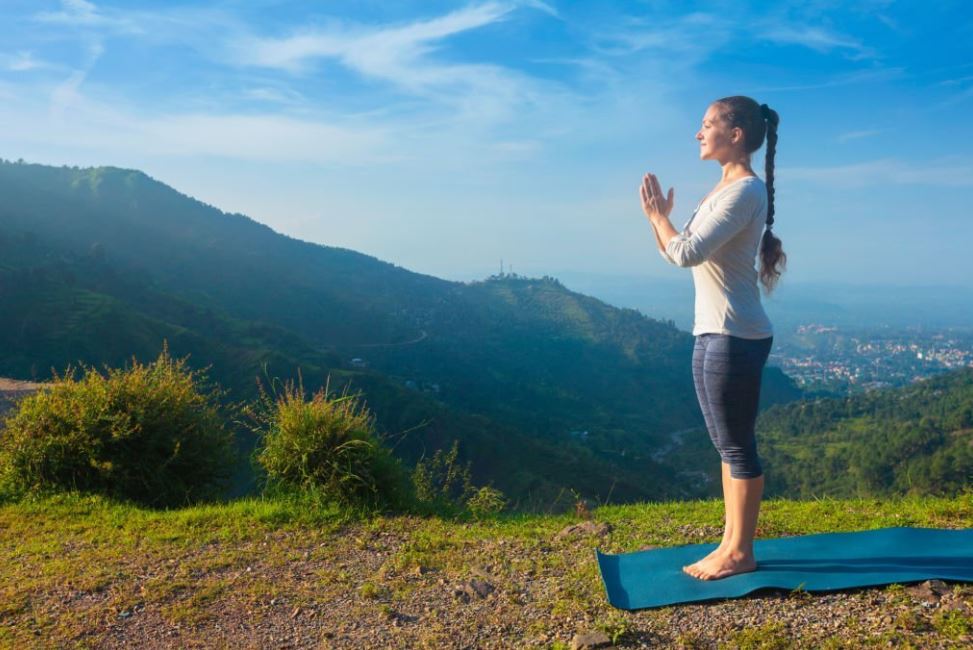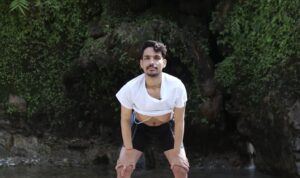Are you feeling overwhelmed by the pressures of daily life? Do stress and anxiety often leave you feeling exhausted and mentally drained? If so, incorporating yoga into your routine can be a powerful tool to find inner peace and restore balance. In this article, we will explore ten yoga poses specifically designed for beginners to help alleviate stress and anxiety. These poses are easy to learn and can be practiced in the comfort of your own home. So, roll out your mat, take a deep breath, and let’s begin this transformative journey.
The Power of Yoga in Relieving Stress and Anxiety
Yoga has been practiced for centuries and is renowned for its ability to promote physical, mental, and emotional well-being. When it comes to managing stress and anxiety, yoga offers a holistic approach that combines movement, breathwork, and mindfulness. By practicing yoga regularly, you can release tension, calm the mind, and cultivate a sense of inner peace.
1. Mountain Pose (Tadasana)
- Description: Stand tall with your feet hip-width apart, grounding them firmly into the mat. Lengthen your spine, relax your shoulders, and distribute your weight evenly.
- Benefits: Mountain Pose helps improve posture, strengthens the legs and core, and promotes grounding and stability.
2. Child’s Pose (Balasana)
- Description: Kneel on the mat, sit back on your heels, and gently fold forward, bringing your forehead to the ground. Extend your arms or rest them alongside your body.
- Benefits: Child’s Pose releases tension in the back, shoulders, and neck, calms the mind, and induces relaxation.
3. Cat-Cow Pose (Marjaryasana-Bitilasana)
- Description: Begin on all fours, aligning your wrists under your shoulders and your knees under your hips. Inhale, arch your back, and lift your chest and tailbone (Cow Pose). Exhale, round your spine, and tuck your chin to your chest (Cat Pose). Repeat the flow.
- Benefits: Cat-Cow Pose increases spinal flexibility, releases tension in the spine and neck, and promotes coordination of breath and movement.
4. Forward Fold (Uttanasana)
- Description: Stand with your feet hip-width apart, fold forward from your hips, and let your head and arms hang down towards the floor. Bend your knees slightly if needed.
- Benefits: Forward Fold calms the mind, stretches the hamstrings and lower back, and promotes relaxation.
5. Bridge Pose (Setu Bandhasana)
- Description: Lie on your back, bend your knees, and place your feet flat on the mat. Press your feet into the ground, lift your hips, and interlace your fingers underneath your body.
- Benefits: Bridge Pose strengthens the back, glutes, and hamstrings, energizes the body, and relieves tension in the lower back.
6. Legs Up the Wall Pose (Viparita Karani)
- Description: Sit sideways next to a wall and swing your legs up the wall as you lie back. Keep your arms relaxed by your sides or place them on your belly.
- Benefits: Legs Up the Wall Pose promotes relaxation, relieves swollen legs and feet, and soothes the nervous system.
7. Seated Forward Bend (Paschimottanasana)
- Description: Sit on the mat with your legs extended in front of you. Reach forward and gently fold over your legs, leading with your chest. You can hold your shins, ankles, or feet.
- Benefits: Seated Forward Bend stretches the entire backside of the body, calms the mind, and relieves stress and anxiety.
Read More: Reclining Hero Pose Benefits and Steps – Supta Virasana Yoga
8. Corpse Pose (Savasana)
- Description: Lie on your back with your arms relaxed by your sides and your legs comfortably apart. Close your eyes and allow your body to fully relax.
- Benefits: Corpse Pose promotes deep relaxation, reduces muscle tension, and restores the body and mind.
9. Alternate Nostril Breathing (Nadi Shodhana Pranayama)
- Description: Sit comfortably, using your right thumb to close your right nostril and inhale deeply through your left nostril. Pause briefly, then close your left nostril with your right ring finger and exhale through your right nostril. Repeat, alternating sides.
- Benefits: Alternate Nostril Breathing balances the left and right hemispheres of the brain, calms the nervous system, and reduces anxiety.
Incorporating yoga into your daily routine can have a profound impact on your overall well-being, especially when it comes to managing stress and anxiety. The ten yoga poses outlined in this article offer a gentle introduction for beginners to experience the benefits of yoga firsthand. By practicing these poses regularly, you can cultivate a greater sense of inner peace, release tension, and promote emotional balance.
Frequently Asked Questions (FAQs)
- How often should I practice these yoga poses?
- It’s recommended to practice these yoga poses at least three times a week for noticeable benefits. However, even practicing them once a week can be beneficial.
- Can yoga really help reduce stress and anxiety?
- Yes, yoga combines physical movement, breathwork, and mindfulness, which collectively help reduce stress and anxiety by calming the mind and promoting relaxation.
- Do I need any prior experience to practice these poses?
- No, these poses are specifically designed for beginners and require no prior yoga experience. They are accessible to anyone willing to give them a try.
- Can I practice these poses in the evening before bed?
- Absolutely! These poses can be practiced at any time of the day. In fact, practicing them in the evening can help relax your body and prepare you for a restful sleep.
-
Should I consult a yoga instructor before starting these poses?
- While it’s not necessary, consulting a yoga instructor can provide personalized guidance and ensure proper alignment and safety while practicing the poses.



